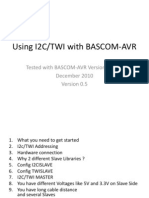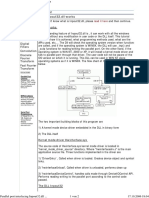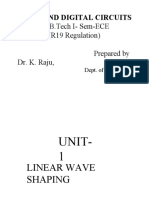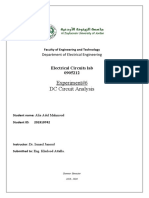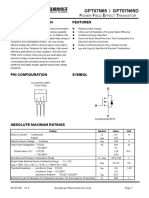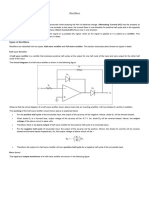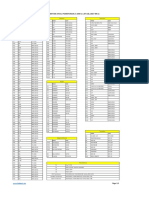100% found this document useful (2 votes)
272 views3 pagesProject-4 ESP32
The document describes a project using an ESP32 board to detect motion with a PIR sensor. When motion is detected, a buzzer will sound an alarm and stop when no motion is detected for a preset time. Components include an ESP32 board, PIR sensor, buzzer, LED, jumper wires and breadboard. Diagrams show the component connections and code is used to configure inputs, variables, and logic to trigger the alarm.
Uploaded by
kimescalicasybanezCopyright
© © All Rights Reserved
We take content rights seriously. If you suspect this is your content, claim it here.
Available Formats
Download as DOCX, PDF, TXT or read online on Scribd
100% found this document useful (2 votes)
272 views3 pagesProject-4 ESP32
The document describes a project using an ESP32 board to detect motion with a PIR sensor. When motion is detected, a buzzer will sound an alarm and stop when no motion is detected for a preset time. Components include an ESP32 board, PIR sensor, buzzer, LED, jumper wires and breadboard. Diagrams show the component connections and code is used to configure inputs, variables, and logic to trigger the alarm.
Uploaded by
kimescalicasybanezCopyright
© © All Rights Reserved
We take content rights seriously. If you suspect this is your content, claim it here.
Available Formats
Download as DOCX, PDF, TXT or read online on Scribd
/ 3























